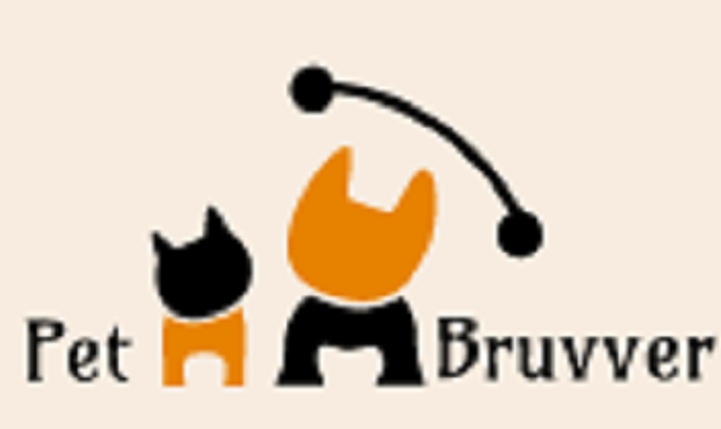Dogs are known for being versatile eaters. They’ll eat just about anything, including things that we humans wouldn’t dream of eating. But just because they’ll eat anything doesn’t mean that they should. Some foods can be harmful to dogs, even if they seem harmless to us. So, can dogs eat bread? The answer is yes, but there are a few things you should know before you give your dog bread. In this article, we’ll explore the benefits and risks of feeding bread to dogs. We’ll also give you some tips on how to do it safely.
Can Dogs Eat Bread?
First things first: can dogs eat bread? Yes, but only certain types. You can’t just give any bread to your dog. Some breads are better for dogs than others, and some breads are incredibly dangerous. Unsalted, unbuttered white bread is generally safe for dogs. You probably won’t see it listed as an acceptable food, but it’s okay in small doses. You should never feed whole wheat bread to dogs, as it can be dangerous. Dogs don’t digest it well, and it can cause digestive issues. And don’t ever feed your dog raw bread dough. It’s a choking hazard, and it contains harmful bacteria.
Is It Safe for Dogs to Eat Bread?
As we learned above, yes, it is safe for dogs to eat bread as long as it’s plain white bread. White bread has a lot of great nutritional benefits for dogs. It’s almost completely fat-free and low in calories. It’s also a good source of B vitamins, which help with energy, metabolism, and mood. White bread also has a fair amount of protein. This is important because dogs need protein to maintain muscle mass, repair tissues, and produce blood cells. Bread also contains complex carbohydrates, which your dog’s body can use to produce energy.
The Benefits of Feeding Bread to Dogs
As we’ve learned, white bread has a lot of great nutritional benefits for dogs. But what other reasons do people give for feeding their dogs bread? Let’s take a look. Feeding your dog bread can encourage her to eat her full. This is especially important for dogs with stomach issues, who might not feel like eating much. Bread is a great source of carbohydrates, which are important for regulating blood sugar. It’s especially helpful for diabetic dogs. Bread makes an excellent treat for puppies and dogs who are undergoing training. It’s high in calories, which means your dog will be getting lots of nutrients in one sitting.
The Risks of Feeding Bread to Dogs
If you’ve read the benefits of feeding bread to dogs, you might be wondering what the risks are. Unfortunately, there are a few things to watch out for when feeding your dog bread. Bread can cause bloating in dogs. If they eat too much at once, it can cause their bellies to become swollen and uncomfortable. Bread can also cause diarrhea in dogs. If they eat too many carbohydrates, they can cause digestive issues, leading to diarrhea. Bread is high in calories. If your dog doesn’t burn off the calories, it can cause weight gain, which can lead to many health issues. Bread doesn’t provide dogs with much in the way of nutrients. While it’s a high-calorie food, it doesn’t have many vitamins or minerals in it.
Is Bread Good for Dogs With Upset Stomachs?
For many years, people have used bread to settle upset stomachs in dogs. But is bread good for dogs with upset stomachs? It can be, if you follow a few rules. First, don’t feed your dog fresh bread. That’s a breeding ground for bacteria. Give your dog stale bread instead. Second, don’t give your dog whole loaves of bread. Instead, break them into smaller pieces. This will make it easier for your dog to digest. If you follow these two rules, you should be okay. That said, it’s best to use other methods to calm your dog’s upset stomach. If your dog has eaten something toxic, or if she has an infection, bread might not be able to help. These issues are more serious than an upset stomach, and they require medical attention.
Need-To-Know Bread Facts
Bread is high in carbohydrates, so it’s important that you don’t overfeed your dog. Limit it to 1 slice per day. You don’t want to give your dog moldy bread. If it’s old, throw it away. Bread contains gluten, which is a type of protein that many people are allergic to. If you’re allergic to gluten, it’s best to keep your dog away from it, too. Bread should always be served to dogs plain. Don’t add butter or jelly because those are high in sugar.
Which Type of Bread Is Better for Dogs?
As we’ve learned, the best type of bread for dogs is plain white bread. It’s low in calories and high in carbohydrates. It’s also very inexpensive, and you can find it anywhere. You can feed your dog pieces of bread throughout the day as a treat, or you can bake it into treats. You can also crumble it into your dog’s food to add some extra calories and carbohydrates. Remember that the key is moderation. Too much bread can cause digestive issues and can lead to weight gain. Be sure to feed your dog only 1 slice per day.
Check for Xylitol
Did you know that some brands of sugar-free gum contain xylitol? Xylitol is a sweetener that has many health benefits. It can help prevent cavities, it can help reduce sugar cravings, and it can even help to lower blood sugar. It’s a great product, but it’s also toxic to dogs. You don’t want to give your dog a piece of gum because there’s no telling how much xylitol he’ll get. You also don’t want to feed your dog baked goods or other foods that contain xylitol. It’s important to make sure you’ve thoroughly checked all foods that contain xylitol. And if you find that your dog ate something with xylitol in it, call your vet immediately. Xylitol can cause vomiting, lethargy, and even seizures in dogs.
How to Feed Bread to Dogs Safely
Feeding your dog bread is generally safe if you follow a few rules. Follow these tips to make sure you’re feeding your dog safely. Don’t feed your dog fresh bread. It’s too likely to contain bacteria. Don’t feed your dog whole loaves of bread. Break them into smaller pieces. Don’t feed your dog more than 1 slice of bread per day. Don’t feed your dog moldy bread. Throw it away if it’s old. Don’t feed your dog baked goods that contain xylitol. If your dog eats too much bread, it can cause digestive issues. If you feed your dog too much bread, it can cause health issues in the long run. And if you feed your dog the wrong type of bread, it can be dangerous. Follow these tips to make sure you’re feeding your dog safely.
Conclusion
Dogs are true omnivores, and they’ll eat just about anything. But just because they’ll eat anything doesn’t mean that they should. Certain foods can be harmful to dogs, even if they seem harmless to us. Bread is one of those foods. It’s high in calories, and it doesn’t provide dogs with many nutrients. It can also cause digestive issues in some dogs. Bread is best fed to dogs in small doses. You can crumble it into their food, or you can give them pieces as treats. It’s important to make sure that the bread you’re feeding your




